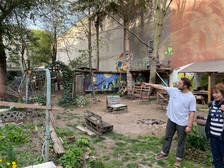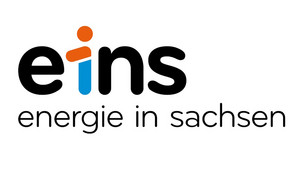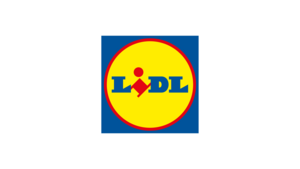Volunteers for Chemnitz 2025 publish reports on their experiences, assignments and adventures around the European Capital of Culture in the volunteer editorial office.
Andrea lives in Chemnitz. Before retiring, she worked as a teacher. As a result, she has a good feel for language and an eye for detail - all qualities that she brings to the volunteer editorial team of Chemnitz 2025.
Our destination this time was the Sonnenberg neighbourhood, which doesn't have a good reputation with most people here in Chemnitz: Too many dogs and their faeces, too many people out of work, uneducated, dirty streets. Cliché or reality? We want to find out together with other interested people under the expert guidance of the neighbourhood pilots.
We meet at the main railway station, which still makes a neglected impression on me, and walk to the first stop on the tour, Markuskirche. We are met by Mr Duderstädt, who takes us on a tour and introduces us to "his" church. It's not unfamiliar to me, as we had our first flat together nearby and have also attended concerts in the church. But I learn something new, for example that the church was the first in Chemnitz to be electrically lit and that the original lighting can still be seen in the gallery.
We continue on to Zietenstraße. Here there is the "Kaffeesatz", a cultural pub with an interesting programme run by an association with 30 members. I had heard about it before, but had never found my way here. This is now proving to be a mistake, as there are many events that pique my interest. So now a visit is on my personal to-do list.
The third point is not far away, also in Zietenstraße. It's a small theatre with 60 seats, tucked away in a backyard and serving different genres. The plays are also performed for and by people with disabilities and for those who don't speak German very well. Its name is "Komplex". It has international collaborations with France, Slovenia, Hungary, England, Portugal, Finland and others and also performs in public spaces. I am impressed by the artist who brings all this closer to us. You can see her huge commitment to the cause, to the people. I really admire her.
Now we come to the "Zietenaugust". It's a neighbourhood garden tucked away in the backyard, just like the little theatre. However, anyone expecting a well-tended garden here will be disappointed. In addition to the flowerbeds, which naturally look a little dull at the moment, there is a self-built sauna, a play area for the children and lots of cosy corners for socialising. Here you can socialise, meet nice people and take a break from everyday life. Gardening is not the main reason for coming here. If you like the alternative, this is the place for you. You can feel the closeness of the scene around Lars Fassmann, who is no longer a stranger to the city.
A church, an artists' café, a theatre, a garden - what's missing? A gallery, of course! And there is one on the Sonnenberg! Its name is "Denkart" and I'm delighted with it. I have a weakness for language that makes sense! Discreetly located, it is, like almost everything in this neighbourhood, not a very large one of its kind. But the dedicated members of the association exhibit their works here, and the great Chemnitz artists such as Dagmar Ranft-Schinke, Osmar Osten and many others receive the attention they deserve. The gallery is an insider tip for anyone interested in art. And if you would like to become an artist yourself, you will be a welcome guest.
The end of our tour is the old Chemnitz city pub. Grit Steger, the head of the urban renewal planning office, is waiting for us. She knows her stuff, you get the impression that she lives on the building site. And she can inspire her audience with this Capital of Culture project. Creating affordable premises for young start-ups with little effort, promoting collaborative work and facilitating communication is exactly what Chemnitz needs. This is the only way the city can retain young creatives.
Finally, we enjoy the special atmosphere of the future courtyard and round off the day with a snack lovingly prepared by the neighbourhood pilots. Our conversations bring the stations we visited back to life, our respect goes to all those involved who are committed to their cause and their fellow human beings. Thank you!
My conclusion:
The Sonnenberg has two faces: there is the one that most Chemnitz residents are familiar with, and there is the Sonnenberg with wonderful corners, with many great projects to discover.














































